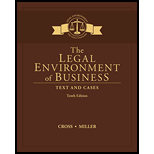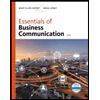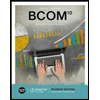
(a)
Case summary: Company S contracted with the company F to provide flakes of calcium chloride. After 1 month of delivery F started to complain about the quality issues of flakes shipped, to which the company S assured for quality maintenance. Later F sued S for rest of the payment. S contended the suit on the basis of breach of contract and revocation of acceptance.
To find:Meaning of revocation of acceptance and its use by the buyer.
Case summary: S contracted with F to provide flakes of calcium chloride. After 1 month of delivery F started to complain about the quality issues of flakes shipped, to which S assured for quality maintenance. Later F sued S for rest of the payment. S contended the suit on the basis of breach of contract and revocation of acceptance.
To find:The use of the revocation of acceptance by the buyer as a ground to recover damages.
(b)
Case summary : S contracted with F to provide flakes of calcium chloride. After 1 month of delivery F started to complain about the quality issues of flakes shipped, to which S assured for quality maintenance. Later F sued S for rest of the payment. S contended the suit on the basis of breach of contract and revocation of acceptance.
To find: The ethical dimension in the cases of revocation of acceptance.
Case summary : S contracted with F to provide flakes of calcium chloride. After 1 month of delivery F started to complain about the quality issues of flakes shipped, to which S assured for quality maintenance. Later F sued S for rest of the payment. S contended the suit on the basis of breach of contract and revocation of acceptance.
To find: The ethical limits to the right of revocation of acceptance.
Want to see the full answer?
Check out a sample textbook solution
Chapter 14 Solutions
The Legal Environment of Business: Text and Cases (MindTap Course List)
- What are the goals for maintaining focus, tracking progress, and staying motivated on wellness? How do they relate and impact the past and future routine workouts? What are the strengths and weaknesses, and how can we overcome the obstacles that could occur?arrow_forwardNonearrow_forwardCrimson Technologies had $3,200,000 in sales for the 2023 year. The company earned 7% on each dollar of sales. The company turned over its assets 3.5 times in 2023. The firm had a debt ratio of 40% during the year. What was the return on stockholders' equity for 2023? Answerarrow_forward
- Please provide the correct answer to this financial accounting problem using accurate calculationsarrow_forwardFinancial Accounting Question please answerarrow_forwardWhite Co. incurs a cost of $15 per pound to produce Product X, which it sells for $26 per pound. The company can further process Product X to produce Product Y. Product Y would sell for $30 per pound and would require an additional cost of $13 per pound to be produced. The differential cost of producing Product Y is: a. $15 per pound b. $26 per pound c. $13 per pound d. $10 per poundarrow_forward
 BUSN 11 Introduction to Business Student EditionBusinessISBN:9781337407137Author:KellyPublisher:Cengage Learning
BUSN 11 Introduction to Business Student EditionBusinessISBN:9781337407137Author:KellyPublisher:Cengage Learning Essentials of Business Communication (MindTap Cou...BusinessISBN:9781337386494Author:Mary Ellen Guffey, Dana LoewyPublisher:Cengage Learning
Essentials of Business Communication (MindTap Cou...BusinessISBN:9781337386494Author:Mary Ellen Guffey, Dana LoewyPublisher:Cengage Learning Accounting Information Systems (14th Edition)BusinessISBN:9780134474021Author:Marshall B. Romney, Paul J. SteinbartPublisher:PEARSON
Accounting Information Systems (14th Edition)BusinessISBN:9780134474021Author:Marshall B. Romney, Paul J. SteinbartPublisher:PEARSON
 International Business: Competing in the Global M...BusinessISBN:9781259929441Author:Charles W. L. Hill Dr, G. Tomas M. HultPublisher:McGraw-Hill Education
International Business: Competing in the Global M...BusinessISBN:9781259929441Author:Charles W. L. Hill Dr, G. Tomas M. HultPublisher:McGraw-Hill Education





